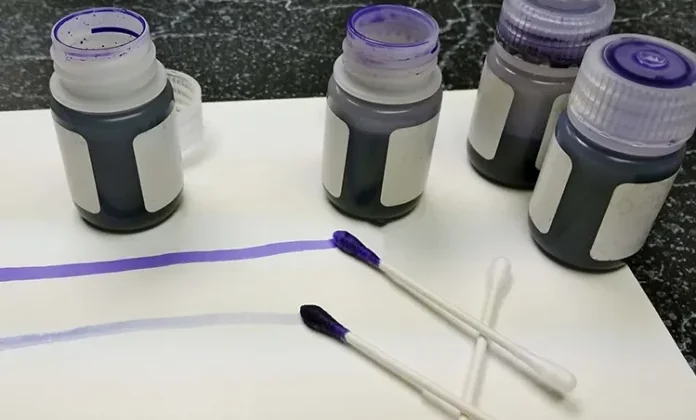

By Capital Adhesives
The process used to glue folding cartons or other products that are poly-coated and/or cartons that require a window film can create a series of challenges if pre-planning is not involved. In both instances, whether it be a poly-coated board stock or a window film to board, the surface is considered a poly surface and is not easily glued. The surface can, in fact, appear to be glued, only to have bond failure sometime after the process is complete. Below are key questions to consider when developing a strategy for improvement.
What does “dyne” mean?
Dyne is simply a mathematical term used to measure surface tension. All surfaces have a “surface tension,” but for a poly-coated surface to respond well to gluing it is important that the surface tension or dyne level of a poly board or film be equal to or greater than 38 at the time of gluing – noting that the higher the dyne number, the better the treatment. For incoming film or material that has poly coating, the minimum dyne should be 44 as it will lose treatment during the normal use and processing of the material.
What is a good process to manage dyne?
Five components should be managed to monitor dyne treatments of a poly material.
- Purchase properly treated material with a specification as to the dyne level. As a reminder, the incoming treatment of a poly surface board or film should be 44 or greater.
- Check dyne level and record results at time of receipt of the material. Sometimes a shipment will not meet the specification requested, but without the quality check upon receipt there is no way to be certain. Also, capturing the data will help identify reliable sources and provide the ability to track the degradation of the treatment.
- Check dyne level throughout storage of material to avoid printing, cutting and gluing of low dyne materials – or at the least, to help prepare the manufacturing process for dealing with materials that have less than desired treatment levels.
- Check dyne level at time of gluing as material will lose surface treatment within the process and storage. As previously mentioned, the dyne level at point of gluing is to be greater than or equal to 38 for more consistent results. As a note, there are special solutions and markers available for testing dyne levels. Dyne solutions are the best measuring tool and give more accurate results.
- Work closely with an adhesive professional to identify test methods for measuring dyne levels properly and to identify the best adhesive product for bonding the poly surface material being used.
Does the dyne level of a poly surface stay the same?
Absolutely not. As stated previously, treatment levels dissipate from the moment they are treated. The average life span of a treated surface for gluing purposes is approximately 12 months. Aged poly-treated material is a high-risk glueable surface. The more aged a poly surface is, the more difficult it becomes to glue.
What can be done to help ensure the glueability of a poorly treated, low-dyne-level poly material?
In some applications, skiving the material provides a solution to a poorly treated poly surface, but skiving creates dust and oftentimes is inconsistent. A more reliable and cleaner process is to use inline plasma or corona treatment systems. These systems can be expensive, and proper use is essential to increase the consistency in gluing. Whatever the issue, having a knowledgeable resource that understands these challenging applications is essential. Aged poly-treated material is a high-risk glueable surface. The more aged a poly surface is, the more difficult it becomes to glue.
Does it matter what adhesive is used?
Emphatically yes. Too often, the wrong glue is proposed or used for gluing poly surface. The reality is that using the wrong glue will create more cost than any factor related to the price of the adhesive. Be cost effective more than simply price conscious. Choosing the right adhesive supplier will make money and retain better customer relationships. Selecting the wrong or cheaper glue may be more costly and create inconsistent gluing and wasted product.
As with any process, many factors contribute to success. The dyne level is not the only factor to consider when gluing a poly surface, but it is a critical component. Understanding and managing the “dyne factor” will promote a better first step in the process.
This article was submitted by Capital Adhesives, a leading supplier of high-performance adhesives and coatings. For more information, visit www.capitaladhesives.com.

